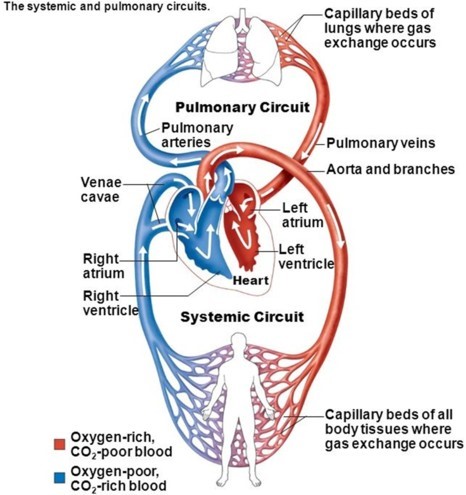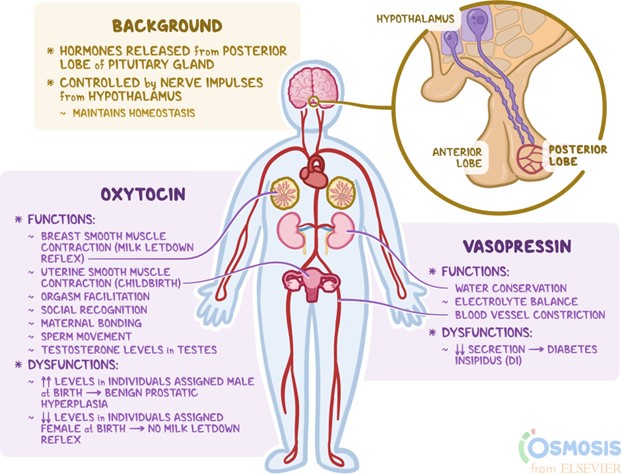The systemic circuit:
Brings oxygen-poor blood from the lungs.
Brings oxygen-rich blood from the tissues.
Sends oxygen-poor blood to the heart.
Sends oxygen-rich blood to the tissues.
The Correct Answer is D
The systemic circuit sends oxygen-rich blood to the tissues.

It is part of the circulatory system that carries blood away from the heart, delivers it to most of the organs and tissues, and returns it to the heart again.
Choice A is wrong because it describes the pulmonary circuit, which brings oxygen-poor blood from the heart to the lungs.
Choice B is wrong because it is the opposite of what the systemic circuit does.
The systemic circuit brings oxygen-rich blood from the heart to the tissues, not from the tissues.
Choice C is wrong because it is also the opposite of what the systemic circuit does. The systemic circuit sends oxygen-poor blood to the heart, not from the heart.
Nursing Test Bank
Naxlex Comprehensive Predictor Exams
Related Questions
Correct Answer is D
Explanation
The systemic circuit sends oxygen-rich blood to the tissues.

It is part of the circulatory system that carries blood away from the heart, delivers it to most of the organs and tissues, and returns it to the heart again.
Choice A is wrong because it describes the pulmonary circuit, which brings oxygen-poor blood from the heart to the lungs.
Choice B is wrong because it is the opposite of what the systemic circuit does.
The systemic circuit brings oxygen-rich blood from the heart to the tissues, not from the tissues.
Choice C is wrong because it is also the opposite of what the systemic circuit does. The systemic circuit sends oxygen-poor blood to the heart, not from the heart.
Correct Answer is B
Explanation
Hormones that the posterior pituitary secretes are synthesized in the hypothalamus.

They are made by neurons in the hypothalamus and stored and released by the posterior lobe of the pituitary gland, a small organ at the base of the brain.
They regulate water balance, blood pressure, and uterine contraction in the body.
Choice A is wrong because the anterior pituitary synthesizes its own hormones, such as growth hormone, thyroid-stimulating hormone, and prolactin.
Choice C is wrong because the thalamus is not involved in hormone synthesis or secretion. It is a part of the brain that relays sensory and motor signals to the cerebral cortex.
Choice D is wrong because the posterior pituitary does not synthesize hormones. It only stores and releases hormones made by the hypothalamus.
Whether you are a student looking to ace your exams or a practicing nurse seeking to enhance your expertise , our nursing education contents will empower you with the confidence and competence to make a difference in the lives of patients and become a respected leader in the healthcare field.
Visit Naxlex, invest in your future and unlock endless possibilities with our unparalleled nursing education contents today
Report Wrong Answer on the Current Question
Do you disagree with the answer? If yes, what is your expected answer? Explain.
Kindly be descriptive with the issue you are facing.
